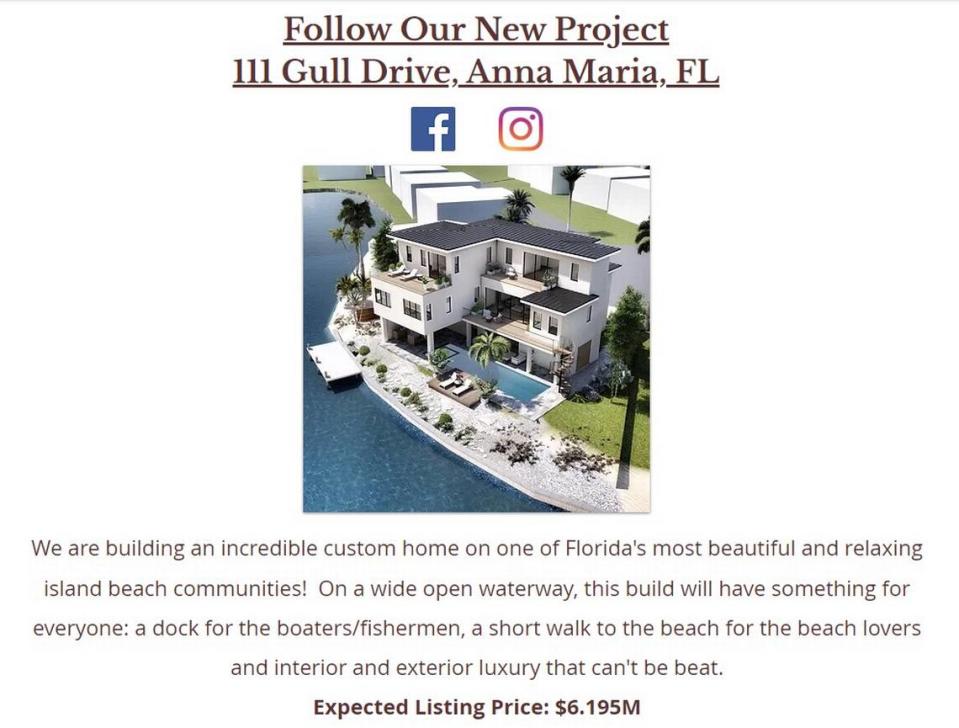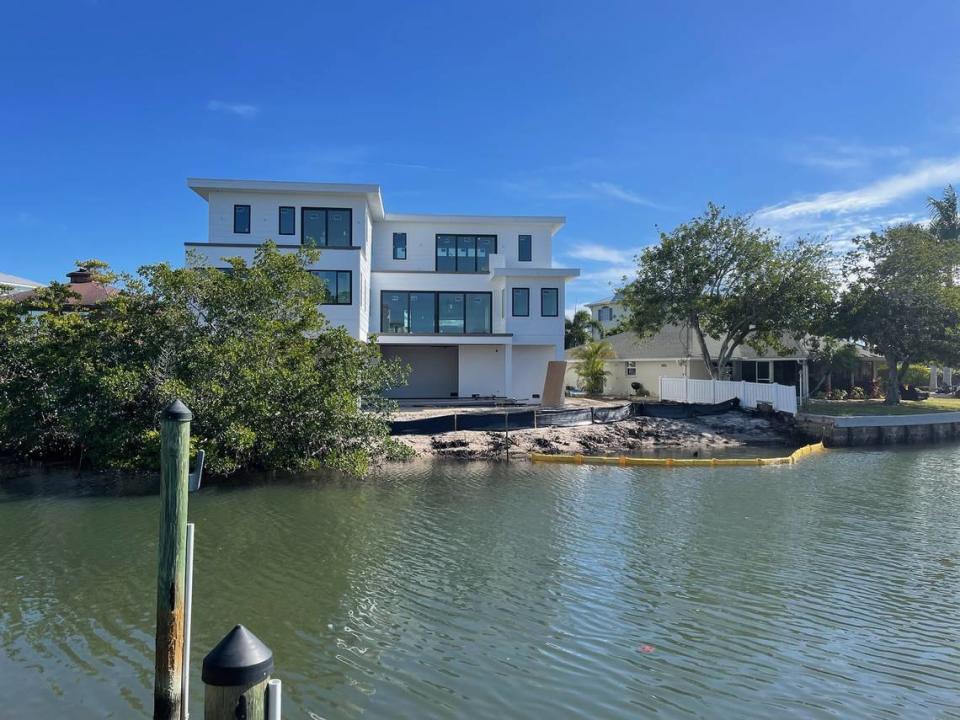State OKs controversial Anna Maria mangrove removal. But construction is still on hold
An investigation by the Florida Department of Environmental Protection found that the controversial mangrove removal at a waterfront Anna Maria Island home is allowed under a state exemption.
An exemption to the state’s mangrove protection rules was issued in 2022 for a seawall that is planned at 111 Gull Drive in Anna Maria, where a new home is under construction.
However, the state’s report notes that the project still lacks authorization from the U.S. Army Corps of Engineers, which must give approval before construction can continue.
FDEP staff visited the site for an inspection on Dec. 22 after residents filed complaints about the mangrove removal.
“During the inspection, it was determined that mangrove alterations occurred on the property and it appeared to be within the footprint of the exempt activity,” said the inspection report, which was made available over the weekend.
The report says that 116 feet of mangroves that stretched the length of the shoreline have been cut down to about 49 feet. The remaining mangroves may also be removed under the state’s exemption.

Mangroves cut for waterway views
After a public outcry, property owners Jackie and Theo Sharp said they are still deciding if they will leave the rest of the mangroves intact.
“We have permission to remove them if we want. We’ll make that decision based on the aesthetics of the lot,” Jackie Sharp said.
The marine trees are considered keystone species that play a vital role in the coastal ecosystem, including stabilizing shorelines, cleaning water and providing food and shelter to wildlife.
Mangroves are protected by state law, but homeowners who desire views of the water can trim the trees into hedges or create “windows” in the mangrove fringe, following strict state guidelines. Removing them entirely is only allowed in very limited instances, such as the installation of a dock or seawall.
“It’s a hot-button issue for a lot of people,” Theo Sharp said. “We understand that and we get their concerns. But we think a seawall is best for that piece of property.”
Sharp said their home seems to have become a “flash point” for a bigger issue about mangrove protections.
“It’ll be interesting to see how this plays out for the future of mangroves,” he said.
The Sharps own a Massachusetts-based real estate and development company.
A description of the three-story home under construction on Gull Drive lists a dock and “wide open” views of the waterway as selling points, with an expected listing price of $6.1 million.

Mangrove removal investigation results
The state’s investigation found two issues.
Inspectors visiting the site noted that erosion control barriers were not in place to prevent loose sediment from entering the water.
After the inspection, silt fences and a turbidity barrier were installed by the Sharps’ contractor at FDEP’s request.
FDEP also reiterated that construction cannot resume at the site until the seawall installation has received authorization from the U.S. Army Corps of Engineers (USACE), which regulates projects that impact U.S. waters.
“...the Department notified the property owner that they should continue to coordinate with USACE and to not continue construction until a USACE authorization is obtained,” the inspection report says.
In an email on Dec. 13, a USACE representative told the property owners to stop construction at the site — “including, but not limited to, mangrove removal.”
As of Sunday, a permit from USACE is still pending.
Environmental questions remain
“This shows that the rules and regulations to protect mangroves are not working,” said Suncoast Waterkeeper chairman Rusty Chinnis.
Chinnis questioned why the state granted an exemption that would impact a large and healthy fringe of mangroves.
The state’s report notes that the mangroves on the property “appear to be historically undisturbed.” The mangrove fringe is approximately 22 feet wide and over 24 feet tall and contains a mix of red, black and white mangrove species, inspectors said.
“If they let them get away with this, mangroves could start coming down everywhere,” Chinnis added.
Mark Summers, a licensed mangrove trimmer and owner of Sanctuary Custom Waterfront Views, said it’s very unusual for mangrove removal to be permitted.
“It doesn’t happen that often,” Summers said. “The only times we remove them is if there’s new dock construction or a seawall. But it’s pretty rare because new seawalls aren’t put in often.”
Summers said the state typically only grants seawall installations where a seawall was previously located or in a place where it will connect two adjacent seawalls.
In this instance, FDEP cited the home’s location on an “artificially created waterway” in its exemption for the seawall. The state’s inspection report notes that the home is located on a human-made canal, “created sometime prior to 1957.”
Chinnis said that doesn’t justify allowing mangrove removal.
“We’ve lost so much of our natural coastline,” Chinnis said. “We need to protect what we have left.”
A concerning precedent?
The waterway connects to Tampa Bay, and residents have documented manatees using the canals and eating mangrove leaves.
Summers agreed that it could set a concerning precedent.
“If the FDEP is correct, that means anyone on any canal can start taking out mangroves and putting up seawalls,” Summers said.
When it comes to choosing a seawall or leaving mangroves in place, Summers said:
“In my opinion, mangroves are better all the way. With erosion control, the mangroves definitely do a better job. Not only do they protect your shoreline better, they buffer the wave action. And there are so many options for trimming them.”

